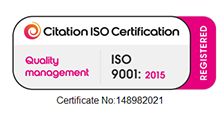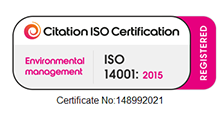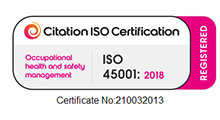What Happens To Our Waste?
We don't usually think about what happens to our garbage after we dump it in the bin and have it collected. Recycling has greatly improved over the years, and with our consumption of plastic packaging increasing all the time, it is more important than ever that we reduce the amount of waste that ends up in landfills.
How Are Trash and Recyclables Separated?
A waste transfer station accepts and separates trash, recyclables, and other materials before transporting them to the proper destination, which is usually a recycling centre or a landfill. In addition to recycling, waste sorting often helps to save natural resources by avoiding the need for large collection trucks to travel long distances to the landfill.
First, recyclable materials such as plastic bottles, paper, and metal are separated from domestic waste. To avoid health concerns, personnel wore hazmat suits and facial protection during this process.
Recyclable materials are separated and transported to nearby recycling centres where they are prepared for reuse.
What Happens to Our Recycling?
Items that can be recycled are segregated at the waste transfer station and delivered to a recycling centre. Brett Stevens, TerraCycle’s Vice President of Material Procurement and Sales provided comprehensive insight into the recycling process.
"Many facilities sort recyclables using several sorting procedures," Stevens explained. "This includes manual sorting by hand, and then putting the material down an optical or NIR (near infra-red) line to sort plastics by the polymer that they’re made of."
After sorting the materials, the "like" objects are baled together. Then they're ready to be transformed into new materials, preventing reusable resources from ending up in the garbage.
Many communities attempt to boost recycled materials as much as possible by rewarding businesses and expanding recycling bin availability.
What Happens to Trash in Landfills?
Non-Recyclable waste is usually disposed of at a landfill. Trash is intentionally piled in modern landfills with complicated liner and drainage systems, allowing it to decay organically with the least environmental impact possible. Once a landfill is full, it is capped and covered with at least two feet of earth to prevent trash migration and toxins from entering the environment.
The landfill is the most typical place for your rubbish to rest. Some locations, however, have intriguing eco-friendly options, such as composting centres, anaerobic digestion, and incineration.
How Can We Reduce Our Trash and Save Energy?
When managing, sorting, and processing waste, many resources are used, from transportation to treatment. “The obvious source of energy expenditure in handling waste is through the collection and transport of the waste,” Johnson said. “But that is normally just a fraction of the energy required to produce and transport the items initially and doesn’t take into account the methane and other greenhouse gases that are emitted in the production, transport, and decomposition of the waste before and after the consumer uses it.”
While landfills do their best to keep the environment as safe as possible, you can help by taking efforts to limit waste at home. Johnson suggests the following waste-reduction strategies:
- Reuse products as much as feasible and recycle waste as much as possible.
- Buy useful products rather than fads or impulsive purchases to help prevent waste when such items are no longer wanted.
- Plan ahead of time to purchase products with minimal packaging and waste.
- Purchase high-quality, long-lasting products to reduce the frequency with which you must discard and replace them.
Check out our infographic below which takes a look at ‘What Happens To Our Waste’ which takes a further look into what happens to our general waste and recycling.

We're committed to your privacy. Find out more.











